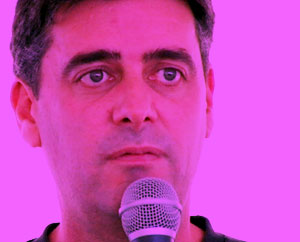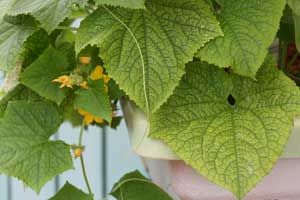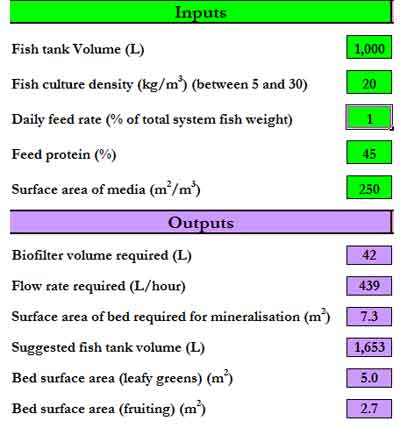Dr Wilson Lennard on Commercial Aquaponics
Why is there very little take up of Aquaponics in the commercial arena around the world? Is it lack of knowledge, too new and unknown or just too hard to make it work profitably?
Its not to do with making it work properly; it has been put to bed by now that this technology works and works well. My work at University and in New Zealand shows categorically that you can match, and even sometimes better, hydroponic plant growth rates and the harvest quality of the plants. Its more about whether it is financially viable or not. All commercial entities need to make money, that is one of the reasons why you do it!
There isn’t enough data available yet to demonstrate categorically that it is economically viable. Everyone is waiting for someone to prove this by risking their own cash. Once someone does it on a large scale and it is proven viable, there will be large “jump on the band wagon” approach.
This happens with all technologies, especially agricultural ones. Unfortunately, there has also been too many people who believe they are experts and build systems and then they fold because they cannot make money. The money comes from knowing business, not aquaponics! This is about business, not the technology. You can can grow as many lettuces as you want in an aquaponic system, but if you cannot sell them, have no market, cannot get the right price, it all falls apart. So, aquaponics is going through a start up phase and this will be the reality for some time until success is achieved financially for someone.
You say you only add three things to your commercial systems. Calcium, Potassium and fish waste and nothing else. Can you expand on that statement? What form of Calcium and Potassium do you use? Is that enough for plants to thrive? What about nutrient deficiencies?
I add calcium hydroxide (hydrated lime) and potassium carbonate to buffer the water back up to my desired pH of 6.8
The basic part of these salts (ie: the hydroxyl and the carbonate) buffer the water upwards. This is the primary requirement and also happens in fish only systems, where sodium bicarb is usually used as it used to be cheap and easy to find. However, sodium is no good for the aquaponic system, so we just swap it for the buffers I use (and everyone else uses) for buffers that carry an element (nutrient) the plants will uptake; hence the potassium and calcium. My systems use small doses of calcium and potassium buffers (table spoons per day) . However, my approach uses a more sophisticated test approach so I can map what nutrients are being used and constantly adjust the buffer approach so i can get optimized plant production.
I also do add a small amount of Iron chelate for the first 6-12 months as Iron is deficient in systems in the initial stages. This approach means all the Phosphorous, Nitrogen and micro elements come from the fish waste, not from a complete fertilizer like Seasol, and I can balance fish nutrient production rates with plant nutrient use rates to optimize the system.
Any plant grows well, but you need to also understand that I run my systems for maximal production of directed plants. For example, I run a herb system completely differently from a lettuce system and differently from a tomato system. Mixed systems (like backyarders use) require a general nutrient profile which can grow all plants and so this isn’t optimized for specific plant production like a commercial system needs to be.
I also mineralise solids and add the supernatant back to the system on a daily basis, so this assists the nutrient profile. The plants experience no deficiencies. This is a no brainer as far as I am concerned. As soon as a nutrient is deficient, you see a deficiency in the plant; usually leaf yellowing or prominent veins or weak leaves etc…If the plant is healthy then it should have all the nutrients it needs to grow and so will contain all the nutrients it usually should have in it.
You don’t need a rocket scientist to tell you a plant is no good and deficient when it is yellow instead of green! I won’t go into the whole “organic certified plants are better than anything else debate” as I am sick of it and the British government spent millions of dollars to categorically prove that organically certified produce is no better nutritionally than any other!! If people think organic tastes better, its probably because it is fresh and hasn’t had all the treatment done to it post harvest as most of our mainstream produce does to extend shelf life etc…
Fish Sizing Calculator
You recently released a fish sizing calculator on your website that helps people figure out the correct fish mass ratio to tank sizes etc. Why did you do that?
I could write a 100 page answer here but will keep it short as possible. The reasons were basically to try and introduce some science and engineering to the backyard field and to provide a predictable design approach for newbies to the hobby.
Jim Rakocy developed his 60g – 100g of 32% fish feed to 1 sqr meter of grow bed area more than 20 years ago, and it frankly astonishes me that no one uses it at all in the backyard field.
Its an easy design approach with predictable outcomes and covers all general aquaponic designs for most plants (greens for the lower 60g end; fruiting plants for the higher 100g end). Easy! My tool also accounts for the bed area required to treat solid fish waste and break it down in time so the bed wont clog.
This comes from established constructed wetland design (another field I work in). As the fish biomass goes up, the bed area required to treat solid waste goes up too. Worms do assist and can lower the bed area required to mineralise solid fish waste, so it does over estimate for worms in the bed situations.
It also outputs the bed volume for biofiltration for people who don’t want a majority media bed approach (this was driven by a recent visit to Hawaii where people wanted to use deep flow with a media bed to treat and filter the system.)
People basically design the wrong way around; they choose a fish tank volume then try and match the media bed size, so the tool is to try and assist that. However, you should design the other way around; decide on the media bed then match the fish biomass, feed input and therefore, eventual fish tank volume. So, i wrote the tool as i was writing too many emails with the same content to new people who wanted an answer.
Is your calculator suitable for all types of fish? Trout, Tilapia, Perch etc?
The calculator has been designed to meet all backyard systems and all fish used. It does generalize, and I design commercial systems in a much more intricate way that matches the fish and plant species to be cultured. BUT, backyarders want a generalized tool to meet as many situations as possible, so in some cases it does over estimate, but that is all that can be done for a general situation. So, yes, it can be used for all fish.
What’s the feedback been like to your calculator from the Aquaponics community?
I haven’t had too much feed back to tell the truth. I have heard from Murray (Hallam) and Joel (Malcolm) who have given it the thumbs up and a few people in the USA. I have also had comments from particular forums sent to me; some good, some bad (as expected). I don’t want people to think this is the be all and end all of aquaponic design; as the attached document says, its a generalized tool for those to use who wish to. My feeling is that any negative comments that have appeared on forums is a sign that there are always different thoughts on particular subjects and that is fair enough. I am unsure if it is being used to tell the truth. If it is, that’s great. If it isn’t, then that is the choice of people. On a general note, I don’t read the backyard forums. It is disappointing however that what I do see on the forums, when someone sends me a link, is a number of people who think they are experts and are closed off to this type of info. Those people can and sometimes do have a high level of impact on the thoughts of other, less confident and knowledgeable people on the forums and its a shame that this may lead to those less confident and knowledgeable people not getting access to usable info. However, on the other side, when i have rarely looked at the forums, I see the vast majority of people are there to assist and help others, and that is great. I guess in a democracy (and I fully believe in free speech) you need to accept the full range of views. What I like to see always is fair debate, but I dislike personal nastiness. It would be nice to see the small amount of nastiness disappear from the forums for the good of all.










has anyone tried flushing solids on to vegetable beds or strawberries out doors then refreshing the water to eliminate the buildup of solids. my strawberry bed is just outside my greenhouse they would love the nutrients doug
In commercial aquaponic, how do we provide the management and guarantee production in aquaponic system once a customer bought this system ?
Thank you.
Hana, your question would best be directed to Dr Wilson Lennard.
His website is http://www.aquaponic.com.au/commercial.htm
Thanks, Mr. Admin 🙂